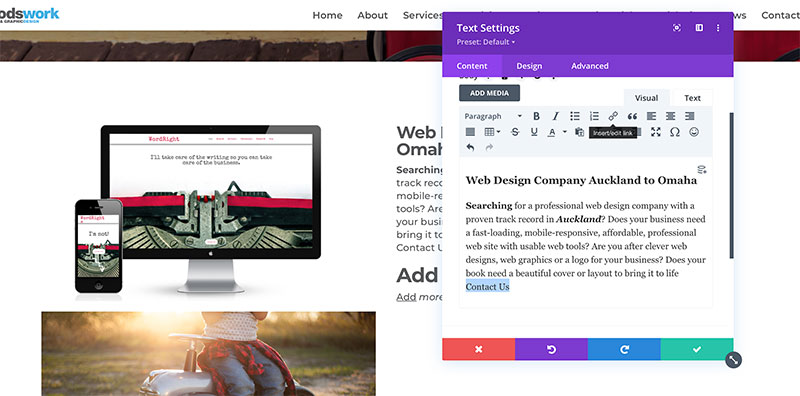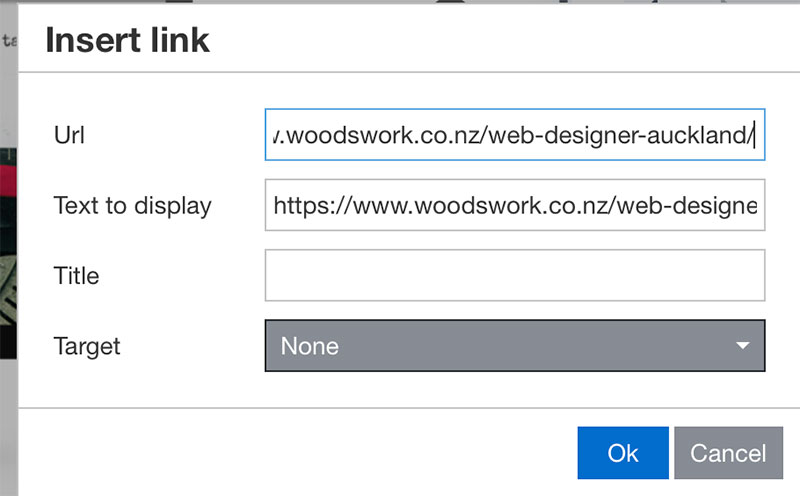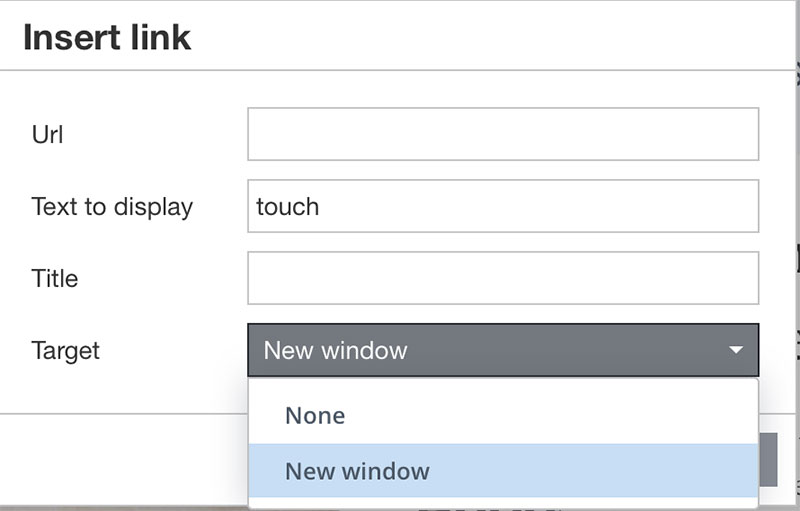Adding text links to your website
To begin adding internal links to text on your website Login to your website using your user name and password.
Select the page or post to be edited.
Select over the text that you want to assign a link to and click on the ‘insert/edit link’ icon in the tool area.
Open up a second tab in the menu bar with your site on it and head to the page you want to link to.
Copy the URL from the bar at the very top of the browser.
Head back to the tab where you are editing your site.
Paste the URL in the correct URL field > Click OK > Tick the module to save changes > Click SAVE to save the page.
To add an external link the method is the same but please see the IMPORTANT note below.
IMPORTANT
If you are wanting the link you create to link to an external site, paste the url but before you hit OK change the Target field from ‘None’ to ‘New window’.
If you don’t do this when the link is clicked the visitor will leave your site.



